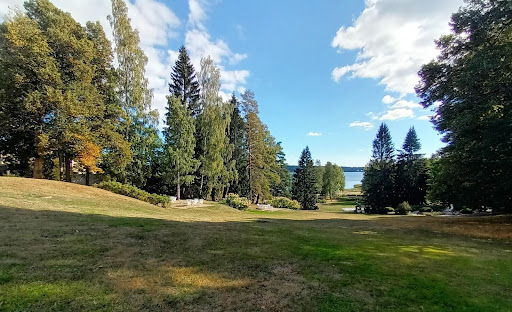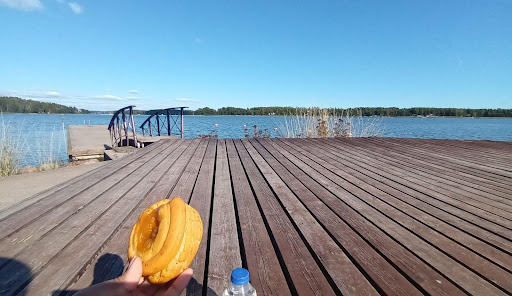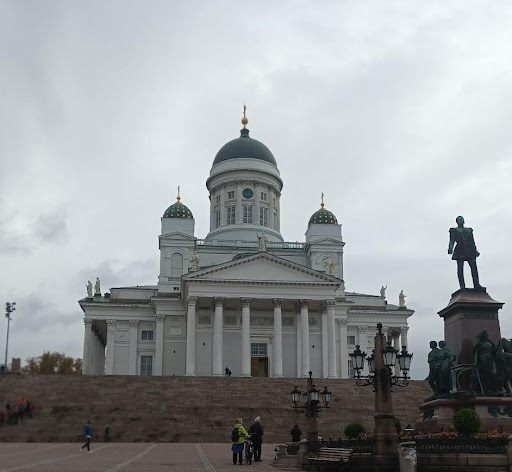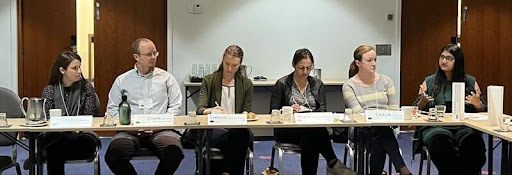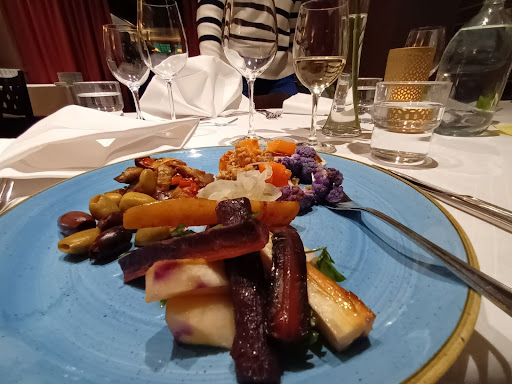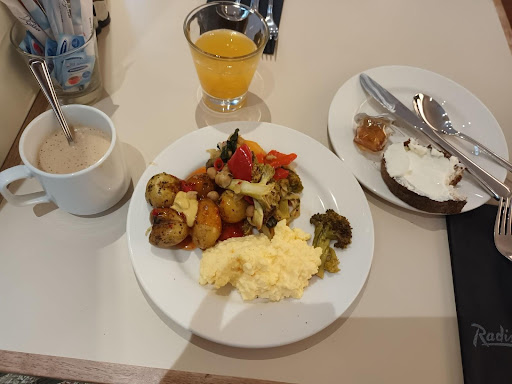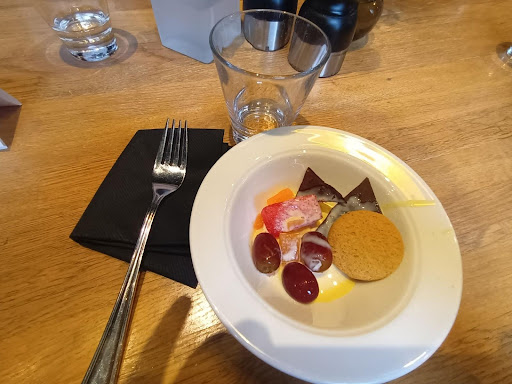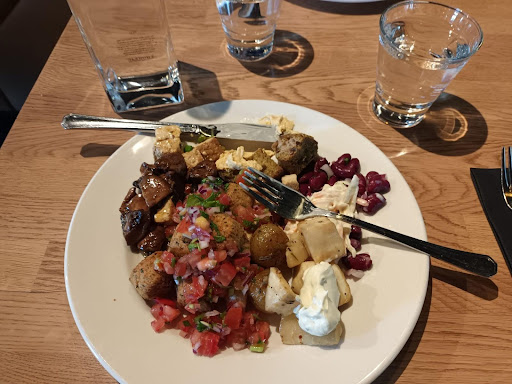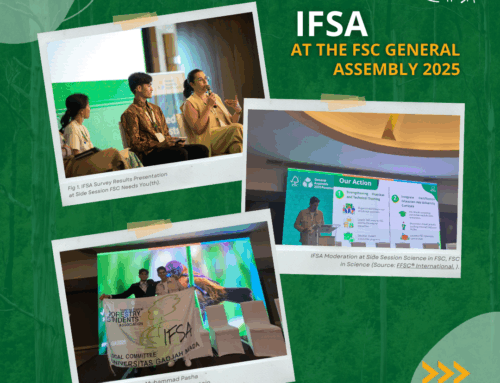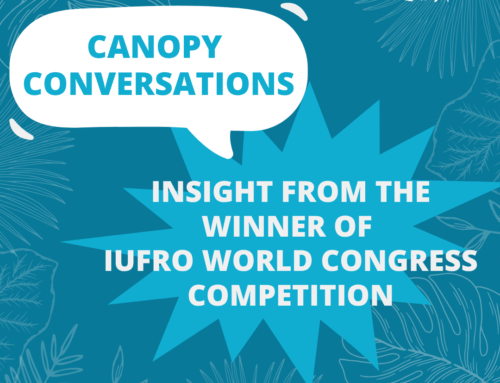“Use Wood Wisely: Field dialogue on Climate Positive Forest Products” – Event Report
Location: Finland
Delegate: Damya Srivastava
Date: 12-15 September 2022
Organiser: The Forests Dialogue
Summary
We started with an introductory presentation on the 11th of September with more than 30 scientists, architects, lawyers, strategists, students, professors and alike, gathered and got to know about each other’s background, field of work, and a peek into their perspectives. Over the next few days, we would look at Mass Timber with our varied lenses and brainstorm over the critical topic: Mass Timber as a climate positive forest product.
On the 12th of September, we started the first leg of our field trip with a visit to the plantation sites and forests of the private landowners and big corporations. Next day, we visited the value-chain setups, factories, timber points and processing units. On the 14th, we woke up bright and fresh for our indoor plenary and discussion sessions. First in line, was an open discussion of our learnings and thoughts about the mass timber production and processing chains taking Southern Finland as a case study. From there, we had back-to-back breakout room discussions with excellent coffee and cake breaks to keep us going strong. September 15th, had us all gather and identify the most common points of concern and then brainstorm for solutions for the same.
The Dialogue ended on a note of positive solution-focussed discussion distilling down varied perspectives, expert opinions and background research papers into one cohesive dialogue.
Communication with Partners
TFD (The Forests Dialogue) and IFSA (International Forestry Students Association) are strong partners, both aiming to support youth engagement and provide opportunities to collaborate with global forestry leaders closely. TFD has been highly supportive and considerate of the goals of IFSA throughout the event; going to far lengths to help delegates with their paperwork and sponsorship; and enabling an environment of care and contribution for all.
This event was a mega success because of the consistent positive collaborations of TFD and IFSA. Cheers !
Experience
Forest of Finland
The Finnish forests have a dominance of three species: Norway Spruce, Scots Pine and Silver Birch; and these are preferred because they provide easy, affordable timber which is of their traditional variety. Most of the forests are certified, and some are double-certified with FSC (Forest Stewardship Council) and PEFC (Programme for the Endorsement of Forest Certification) being the preferred choices.
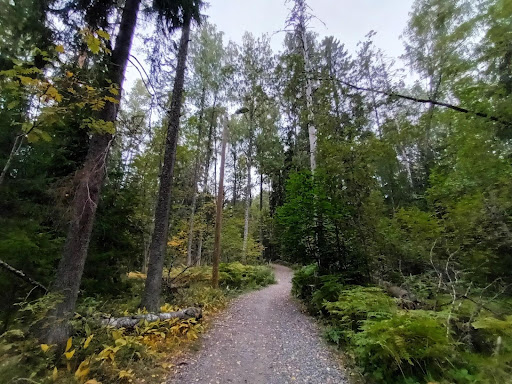
Fig: Forest trail in Helsinki, Finland – look at the tall, commanding conifers.
Highlight 1: Biodiversity
With the majority of tree species culminating in a total count of 30 species, biodiversity is a major concern here. In the previous years, bark beetles had decimated entire patches of tree populations and since then, trees, especially timber species, are guarded against such swiping terrors which affect entire populations, by increasing the biodiversity of the forests. Additionally, because of climate change and global warming, the species composition is shifting towards a more tropical variety.
Highlight 2: Skills & Labor
There is a shortage of manual and skilled labor and it is more prominent because the tasks of a harvesting operator are highly skilled, which include operating heavy machinery and understanding forestry sciences of timber operations. Other European Countries typically fill in the gap of this labor shortage in Finland.
Forest Ownership and Management
The conversations we had with private forest owners were especially invigorating, because they view it as their home, not just as a crop to benefit from – which is a huge shift from the negative perception of private forestry in India. This is also evident in how they plan their plantations by looking 50-70 years into the future (when the timber would be ripe for the market), that is, they don’t plant trees for themselves but for their next generation who would inherit the land. With more than 600 thousand private owners in Finland, their stakeholder rights are immensely important.
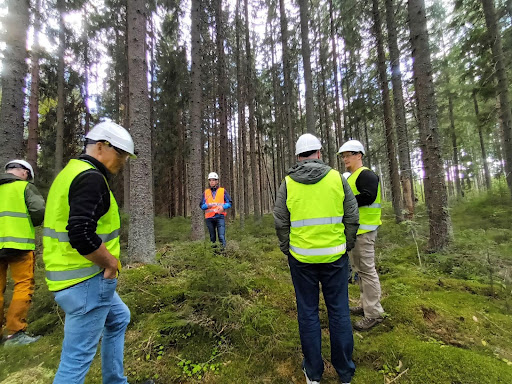
Fig: Learning about natural and planted forests, and the forest systems in Finland.
The European philosophy of “Every Man’s Right” respects these various stakeholders i.e. private owners and the public. Basically, all people have the right to access forests for recreation and basic livelihood needs (for instance, berry or mushroom picking), and the private owners are, in general, free to pursue forestry as they see fit.
Every man’s right can be compared to the legal rights of forest tribals of India – in their similarity to access forests and continue their traditional ways.
Mass Timber
The thing we were there to talk about!
A short rundown: Mass Timber is a synthetic composite wood made from pieces of wood, but it is not a complete solid log. The uniqueness of mass timber is that it can be used to build on top of an existing structure, thereby extending the volume or strength of the construction. There are two popular types: LVL (Laminated Veneer Lumber) and CLT (Cross Laminated Timber), additionally GluLAM is also gaining traction. LVL is of higher strength and durability, using less glue and wasting less wood; however it is not as popular as CLT which is cheaper and more easily available.

Fig: A giant sloped roof, constructed with mass timber – one of the very few of its kind.
Highlight 3: Perception
Whether vague or negative, the perception about mass timber or wood constructions is a prevalent concern. A few strategies we came up with were, to have a better messaging system – in social media, via educational platforms and others; and to expand the message of how wood, and mass timber, is a good construction material which supports local economy, builds work force and increases construction productivity.
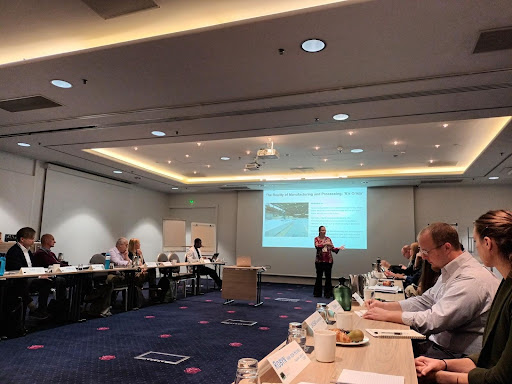
Fig: Discussing and brainstorming our way through plenary sessions and breakout rooms.
Landscape and energy
On an adjacent note to mass timber, energy crisis and production will be one of leading factors of decision-making for any manufacturing industry, especially keeping in mind the current political scenario. Shifting sources of gas pipeline and coal imports, because of strained international relations, had posed a question in front of the country; but its landscape and geography enable steady energy production.
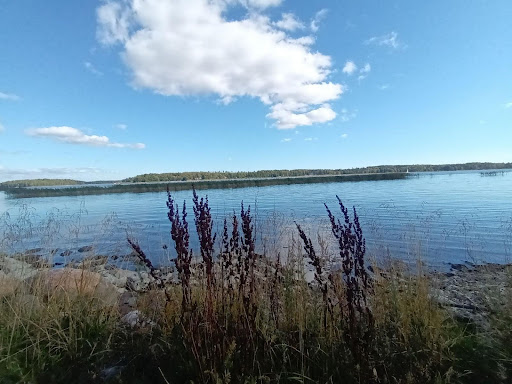
Fig: A local lake in Porvoo, Finland.
Known as the Land of a Thousand Lakes, Finland has more than 150 thousand lakes – and it comes as no surprise that water, especifically lake bed, is one of its stable energy sources (along with nuclear energy). Like with everything Finnish, a peaceful and pristine atmosphere surrounded the lakes I visited (like the one in the picture above).
End Note
Forestry students, especially the enthusiastic ones (like the IFSA family), are always interested in the upcoming trends and fields in forest sciences and associated sectors, which this dialogue provides excellently. From discussing the scope of Mass Timber, to exploring the climate positivity in wood constructions, TFD provided a superb platform for conversations, learning and contributions of youth and students.
Bonus: Incredible Food!!!
